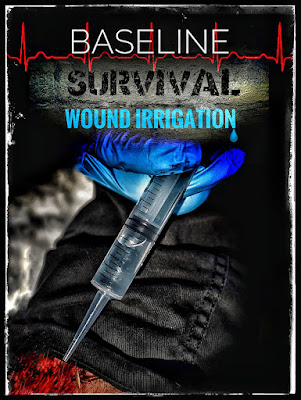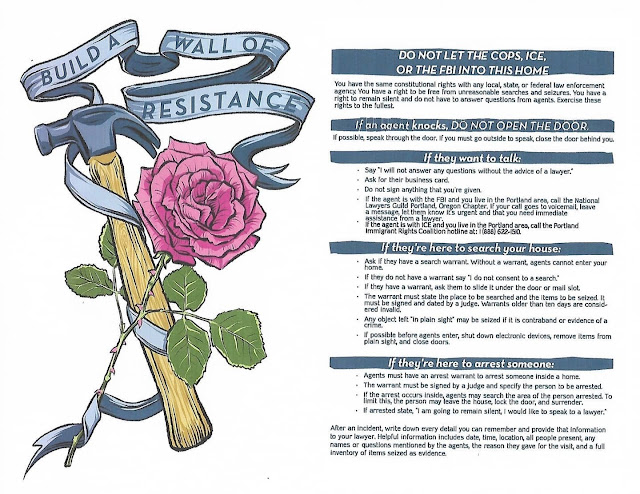Wound Irrigation
When talking about the topic of Wound Irrigation, many people picture someone steadily pouring water over a wound from a bottle or container. While that is certainly better than nothing, there are certain things to consider which greatly increase the efficiency of Irrigation. Whenever Wound Irrigation is performed correctly it removes debris and contaminates from the wound, enhances wound healing, and most importantly makes it easier for you to visualize (and thus assess) the Wound. Like I mentioned before, Irrigation is not as simple as pouring water or normal saline over a wound before you apply a dressing, it must be performed properly through planned and deliberate actions to achieve the desired results.
So if it's not dumping a ton of water over the Wound, what is Irrigation, and what does it achieve when carried out correctly? Wound irrigation involves the use of fluid, in a pressurized method, to remove:
💧cellular debris that is loosely clinging to the wound
💧surface bacteria
💧wound exudate (drainage)
💧dressing residue
💧residual topical residue from ointments and other topical agents
The ultimate goal when irrigating a wound is to assist with maintaining a moist wound environment to promote optimal wound healing and debridement of devitalized tissues, also to expedite wound healing. Almost all wounds you'll encounter can and should be irrigated. The only exception to the rule I can think of off hand is wounds that are bleeding heavily, and I mean heavily. In these types of wounds Irrigation will impact the bodies blood clotting cascade and any irrigation may dislodge clots that are forming, or have already formed, and actually cause the bleeding to resume.
So now that we have an idea of what Irrigation is, and what we're hoping to accomplish by performing it, let's look at some considerations of Wound Irrigation you'll want to keep in mind:
💡Wounds should be irrigated during your initial assessment to more effectively and accurately assess all aspects of the Wound, in addition wounds should be irrigated every time you perform a dressing change.
💡Normal saline is considered the standard as far as irrigant solution in the healthcare setting; however, there is evidence based reports in circulation currently that elude to tap water resulting in faster wound healing.
💡THE MOST IMPORTANT Consideration to Irrigation is no doubt Irrigation Pressure. Without enough pressure being applied during Irrigation, the process will fall short of removing surface bacteria, debris, and contaminants. In the event this happens, the potential for Wound infection is greatly increased. On the other end of the spectrum providing too much pressure can actually force contaminants downward into the wound bed and also disrupt and damage granulation tissue. The optimal Irrigation pressure should be between 4 and 15 psi, to achieve this in the healthcare setting an 18g blunt tip catheter is attached to the end of a normal saline flush.
With the above considerations in mind, let's walk through, step by step, on how you should perform the Irrigation of a wound:
💧Gather all the necessary materials to preform your intervention, set up and stage your area appropriately
💧Preform hand hygiene and then position the patient to provide the best access and visualization of the wound.
💧Don gloves and remove the old dressing, throw away the old dressing and the now soiled gloves, perform hand hygiene
💧Drape the patient and pad around the wound with towels or padding to absorb the irrigant solution.
💧Don protective equipment (eye protection, gloves, and gown and mask). The likelihood of splash back should be heavily considered and protected against
💧Irrigate the wound using the appropriate pressure (4-15 psi, accomplished by using the appropriate size needle to achieve pressurized stream), of note studies have long reported a psi of 10-15 to be most affective, for that Pressure an 18g needle can be attached to the flush
💧Pat dry any intact skin with light pressure and cover open areas with sterile gauze
💧Redress the wound only after performing any necessary interventions such as debridement.
💧Dispose of dirty/soiled materials
IMPORTANT NOTE: You should be careful to allow the solution to flow from the CLEANEST to the DIRTIEST area of the wound. Do not force irrigation solution into any wound pockets such as any areas of tunneling.
So in closing lets cover some key points to take away from this write up. Performing wound irrigation is easy if you understand the principles behind doing it, in addition it's relatively quick and effectively promotes wound healing. Having the proper tools to carry out your interventions readily available to you will make the process more efficient and limit the chance of Wound contamination, and thus, risk of infection. Irrigation can literally be carried out on almost any Wound, on any part of the body, and can be done in virtually any setting. So, if the injury results in any debris being present in the wound, if you suspect any contamination at all (and you always should), if you have any concerns at all, FLUSH 💦, FLUSH💦, FLUSH💦
References:
https://www.statpearls.com/ArticleLibrary/viewarticle/31405
https://www.ncbi.nlm.nih.gov/pmc/articles/PMC8299912/
https://emedicine.medscape.com/article/1895071-overview
Source: Baseline Survival



Comments
Post a Comment